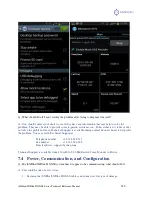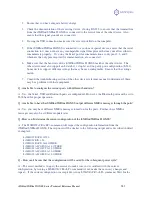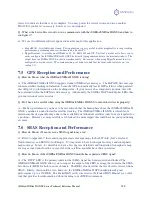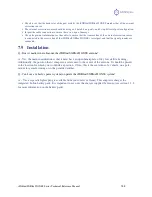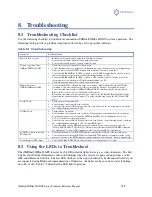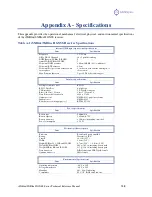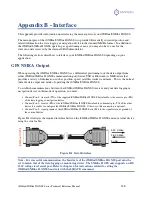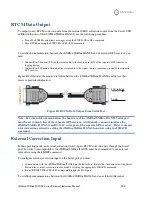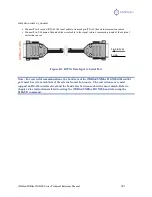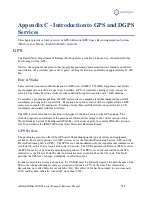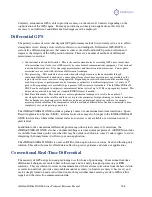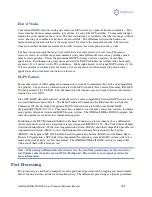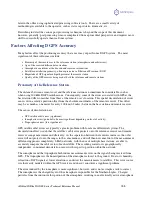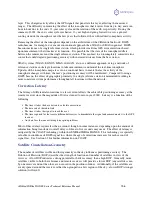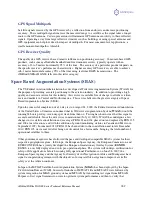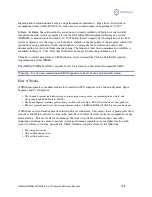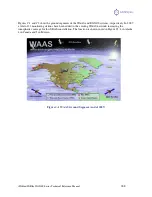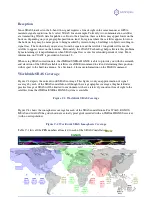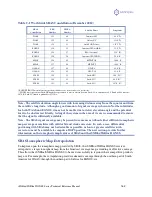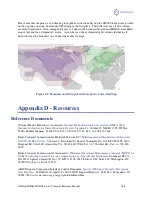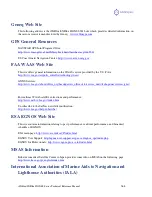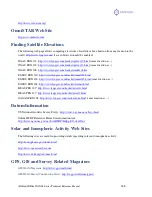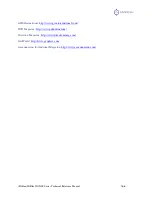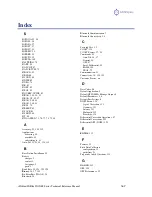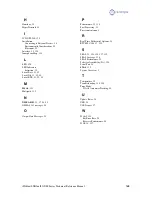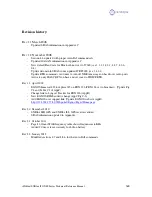
iSXblue/SXBlue II GNSS Series Technical Reference Manual
154
How it Works
Conventional DGPS involves setting up a reference GPS receiver at a point of known coordinates. This
receiver makes distance measurements, in real-time, to each of the GPS satellites. The measured ranges
include the errors present in the system. The base station receiver calculates what the true range, without
errors, knowing its coordinates and those of each satellite. The difference between the known and
measured range for each satellite is the range error. This error is the amount that needs to be removed
from each satellite distance measurement in order to correct for errors present in the system.
The base station transmits the range error corrections to remote receivers in real-time. The remote
receiver corrects its satellite range measurements using these differential corrections, yielding a much
more accurate position. This is the predominant DGPS strategy used for a majority of real-time
applications. Positioning using corrections generated by DGPS radiobeacons will provide a horizontal
accuracy of 1 to 5 meters with a 95% confidence. More sophisticated, short-range DGPS systems (10 to
15 km) can achieve centimeter-level accuracy, but are expensive and often limited to precise survey
applications due to technical constraints on their use.
DGPS Format
For manufacturers of GPS equipment, commonality is essential to maximize the utility and compatibility
of a product. The governing standard associated with GPS is the Interface Control Document, ICD-GPS-
200, maintained by the US DoD. This document provides the message and signal structure information
required to access GPS.
Like GPS, DGPS data and broadcast standards exist to ensure compatibility between DGPS services and
associated hardware and software. The Radio Technical Commission for Maritime Services Special
Committee 104 has developed the primary DGPS standard associated with conventional DGPS,
designated RTCM SC-104 V2.2. This correction standard is used by many correction services, including
many private reference stations and DGPS beacon systems. The iSXBlue/SXBlue II GNSS supports this
correction protocol via either of its communication ports.
In addition to the RTCM standard, the Radio Technical Commission for Aeronautics has a differential
service intended for wide area correction services, designated RTCM SC-159. The United States Federal
Aviation Administration’s Wide Area Augmentation System (WAAS) and other compatible Space Based
Augmentation Systems (SBAS) such as the European Geostationary Navigation Overlay System
(EGNOS), the Japanese MT-SAT Satellite-based Augmentation System (MSAS) and the Indian Space
Research Organization’s GPS Aided Geo-Augmented Navigation system (GAGAN) system (still in test
mode at the time of print) use this data format. The iSXBlue/SXBlue II GNSS receiver is compatible
with each of these differential services.
Note – When using a differential correction service, the resultant position may be referenced to a
local datum rather than the current WGS-84 ellipsoid. Please refer to your signal provider for
more information.
Post Processing
Post processing is a method to compute accurate positions in post mission by logging raw measurement
data at the base station and the rover simultaneously. The differential processing can then be performed

